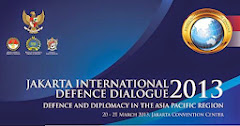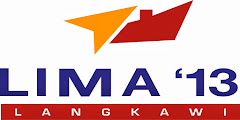 RSS Formidable (photo : ImdexAsia)
RSS Formidable (photo : ImdexAsia)
On 23rd February the Republic of Singapore Navy (RSN), was announced as the latest member of Combined Task Force 151 (CTF-151), a coalition of nations under the command of US Navy Rear Admiral Terence McKnight tasked with anti-piracy patrols around the Gulf of Aden. The RSN is due to send one ‘Endurance’ class Landing Ship, Tank (LST) to CTF-151 in support of efforts to combat maritime piracy in a region notorious for these modern day brigands. The deployment to CTF- 151 illustrates that, in less than forty years since its formal establishment as an independent arm of the Republic of Singapore armed forces, the RSN has become a potent bluewater force able to project power far beyond its home shores.
Despite a population of only 4.6 million, and a land area of 682.7 square kilometres, Singapore has one of the most capable and modern navies in the Asian region. The force can trace its routes back to 20th April 1934 when the British Royal Navy Volunteer Reserve established a presence in the British colony of the Straits Settlements with two patrol craft. The force was known as the Straits Settlement Royal Naval Volunteer Reserve (SSRNVR). By 1941, the SSRNVR had become the Singaporean component of the Malayan Royal Naval Volunteer Reserve (MRNVR). During the Second World War, the MRNVR and SSRNVR would form a component of the Royal Navy's presence in Southeast Asia. The MRNVR was renamed the Royal Malaysian Navy in 1952 as a recognition of its wartime actions. The SSRNVR was subsequently renamed the Singapore Division of the Royal Malaysian Naval Volunteer Reserve. When Singapore declared its independence from Malaysia in 1965, the Singapore Division was renamed the Singapore Naval Volunteer Force (SNVF) and inherited two ships from the Royal Malaysian Navy, notably the Republic of Singapore Ship (RSS) Panglima and the RSS Singapura; a ‘Ford’ class patrol craft, and an ex-Japanese minelayer which had been captured by the British, respectively. The SNVF also had the RSS Bedok, a former police patrol craft as part of its fleet. However, the SNVF was renamed the People's Defence Force (Sea) under the authority of the Sea Defence Command (SDC) in September 1967. The SDC was later renamed the Maritime Command (MC) in 1968.
No sooner was the modern RSN taking shape than it had to deal with a subtle yet important shift in regional geopolitics. In 1971, the British Conservative government of Prime Minister Edward Heath announced that the Royal Navy would vacate all of its naval bases east of the Suez Canal, alongside the other services in the British armed forces, as part of an accompanying reduction of the UK's military presence throughout Asia. The MC was suddenly faced with a maritime security vacuum triggered by the British withdrawal. Fortunately, two years' before Mr. Heath’s announcement, the MC had received its first new vessel, the patrol craft RSS Independence. Independence would later be joined by RSS Justice, Freedom and Daring; the staffing of the MC also received a boost in 1969, with the first 160 cadets graduating from the School of Maritime Training. It was on 1st April 1975 that the modern RSN came into being.
 RSS Archer-newest submarine of RSN (image : The Strait Times)
RSS Archer-newest submarine of RSN (image : The Strait Times)
Today's modern force began to take shape from 1983 with the government deciding that the RSN had a vital role to play in securing the country’s Sea Lines of Communication (SLOC). Today, seven percent of Singapore's Gross Domestic Product (GDP) is derived from the country’s maritime activities including shipping and port services. In 1988, the government launched the 'Navy 2000' plan which stipulated the acquisition of new submarines, amphibious support ships, maritime patrol aircraft, patrol vessels and mine warfare craft. In tandem with the ship and aircraft acquisitions, the RSN would also modernise its existing fleet with Surface-to-Air (SAM) and Anti-Ship Missiles (AShMs).
Changes also occurred at the organizational level with the establishment of Coastal Command (COSCOM) in 1988, tasked with ensuring the security of the Singapore Strait and its approaches. COSCOM is comprised of the RSN’s 181, 182/189 and 194 Squadrons. Also under COSCOM's jurisdiction are five Saab Giraffe-100 100-km (53-nautical mile) range radar systems. One year after the formation of COSCOM, the RSN was organised into two additional formations namely the 1st Flotilla, comprising 185 and 188 Squadrons, and the 3rd Flotilla with 191 and 195 Squadrons. In wartime, the 3rd Flotilla would also operate with the Reserve 192 and 193 Squadrons using requisitioned civilian vessels.
The current Chief of the RSN is Rear Admiral Chew Men Leong, who reports to the Chief of the Defence Staff. Below the Chief of the Navy (CNV) are the five RSN formations: Fleet (including the 1st and 3rd Flotillas, 171 Squadron which operates submarines, and also the Base Defence Squadrons) and Coastal Command (COSCOM), the Naval Diving Unit (NDU), Naval Logistics
Command (NALCOM) and the RNS’s Training Command (TRACOM).
The NDU is responsible for a number of missions including underwater demolition, mine clearance, combat diving and explosive ordnance disposal. NDU includes the Diving School, Clearance Diving Group, Combat Diving Group and Underwater Demolition Diving Group and is headquartered at Sembawang Camp in the north of the island. NALCOM is tasked with performing maintenance on the RSN's vessels at its bases at Tuas and Changi (see below). The logistical and materiel needs of the RSN are met by NALCOM's Naval Material and Transportation Base, and the Base Medical Squadron provides medical care for the RSN' s personnel. Comprising the Institute of Maritime Warfare, and the Institute of Maritime Operations and Systems, TRACOM fulfils the RSN's training needs with tactical training aids and simulators.
 RSS Challenger (photo : Cyberpioneer)
RSS Challenger (photo : Cyberpioneer)
As stipulated in the Navy 2000 plan; the RSN's surface combatants received a major enhancement of their missile capabilities. In terms of AShMs, the RSN's 'Victory' class corvettes, which form 188 Squadron of the 1st Flotilla had already operated the 36-km (19.4-nm) range Israel Aircraft Industries Gabriel AShM, and were later upgraded with the Boeing RGM-84 Harpoon, 315-km (170-nm) range weapon. This latter missile was also carried by the forces' 'Sea Wolf' class missile gunboats which were retired from service on 13th May 2008. In terms of SAMs, the RSN received from 1993 the Matra (now MBDA) 5.3-km (2.8- nm) range Mistral which were fitted to the 'Fearless' class patrol vessels of COSCOM’s 182/189 Squadron and also the Endurance class LSTs of the 3rd Flotilla’s 191 Squadron. The Victory class ships would also receive the Rafael Barak-1 10-km (5.3 nm) range SAM system from 1996.
The RSN has three major bases in Singapore. Tuas Naval Base, located on the west of the island, was opened on 2nd September 1994. Tuas followed Brani Naval Base; located on the south of the island which was the first facility operated by the RSN. Tuas was developed to provide more space for the growing fleet and more recently Changi Naval Base was opened on 21st May 2004 on the east of the island. Changi is home to the RSN's submarine, frigate and amphibious support ships, and also RSS Panglima, the RSN's training base.
It was in the mid-1990s that the RSN began to build its submarine force. In 1995, the force acquired the first of its 'Challenger' class diesel electric boats (SSKs) from the Marinen (Royal Swedish Navy). The submarines were former 'Sjoormen' class vessels and were extensively modified to make them suitable for operations in the warmer tropical waters surrounding Singapore. This improved their resistance to corrosion and also their air-conditioning. By 1997, RSS Challenger, the lead ship of the class, was in service and was joined in 1999 by RSS Conqueror, the final two vessels in the Challenger class, RSS Centurion and RSS Chieftain were commissioned in 1999 and 2001 respectively. All of the vessels organised into 171 Squadron.
Along with the submarine acquisition, one of the most dramatic modernisation efforts by the RSN has been its acquisition of six 'Formidable' class guided missile frigates (FFGs) from French shipbuilder DCNS. These ships are closely based on the Marine Nationale (French Navy) 'La Fayette' class frigates. The Formidable class ships replace the Sea Wolf vessels which had been in RSN service since 1968. The lead ship of the class, RSS Formidable, was built by DCNS in France; although the remainder will be constructed by Singapore Technologies Marine (ST Marine) at the company's yard on the island. All six ships will be commissioned into RSN service by 2009.
(Asian Military Review)










Tidak ada komentar:
Posting Komentar